Kimchi (Korean Spicy Napa Cabbage)
I am so proud of my first batch of kimchi! This has been one of those uber intimidating things to make and I'm happy to say - challenge accepted and accomplished!
Since we've been married, my husband and I have been super lucky to be getting a regular supply of homemade kimchi from my MIL. She derives happiness from feeding her children.
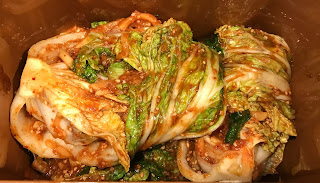
Over the Christmas holidays, we took a vacation with my in-laws to Maui. I managed to take copious notes of her kimchi recipe and instructions, whilst helping her make it. This will explain the variance in photos you see in this post. The kimchi I made with her is brighter and redder; the kimchi I made this week has a deeper, brown colour. The reason for this is the difference in gochugaru or Korean red chili flakes. What I used was stored in my pantry for a couple of years. What my MIL used was brought over fresh from Korea. True story - her sister in Seoul went to the farm where the peppers are grown, dried and prepared to vet the product for quality and Made in Korea authenticity before purchasing it. It sells for $55/ kg.
Before I make my next batch, I'll need to import me some gochugaru!
Here are a few tips before you start making your kimchi:
2) No need to wash the napa cabbage before salting and marinating it the salt water. They are much easier to wash afterward as the salt softens the leaves, allowing them to bend easily so you can get into the cracks between the leaves where they are connected.
3) Do yourself a favour and get a kimchi container for probiotic fermentation. It's my favourite $20 item in the kitchen. If you are familiar at all with kimchi, you will know that it has a very strong flavour and scent that seeps into various items in the fridge. What I enjoy the least in life is milk tainted with kimchi flavour!
Time: 3 hrs + at least 2 days for the fermentation process
You will need the following ingredients:
1) You can either use food gloves or your bare hands to prepare the kimchi. If you use your bare hands, please remove your contact lens first! 😖
2) No need to wash the napa cabbage before salting and marinating it the salt water. They are much easier to wash afterward as the salt softens the leaves, allowing them to bend easily so you can get into the cracks between the leaves where they are connected.
3) Do yourself a favour and get a kimchi container for probiotic fermentation. It's my favourite $20 item in the kitchen. If you are familiar at all with kimchi, you will know that it has a very strong flavour and scent that seeps into various items in the fridge. What I enjoy the least in life is milk tainted with kimchi flavour!
Time: 3 hrs + at least 2 days for the fermentation process
You will need the following ingredients:
4 large napa cabbage ( approx 6 lbs)
2 onion, cut in quarters
1 large Korean radish (2 lb), julienned
4 bunches of green onions, cut in 1-inch length (Tip: use 1 bunch of green onion per napa cabbage)
1/2 an apple or Asian pear
Approx 1 1/2 cups coarse sea salt to sprinkle over the napa leaves
7 tbsp fish sauce
1 tbsp salted shrimp (optional)
1 tbsp sugar
5 tbsp sweet rice flour or rice flour
1 tbsp fresh ginger
1 cup plus 5 tbsp Korean red chili flakes/ gochugaru *adjust to your liking
1 cup plus 5 tbsp Korean red chili flakes/ gochugaru *adjust to your liking
1/2 cup minced garlic
1/2 cup roasted sesame seed
Prep the napa in advance and soak for 2 hrs:
Cut the napa gently at the bottom in halves. Use your hands to pull it apart. Cut gently again to make quarters and pull it apart.
Note: using a knife to cut the entire cabbage down the middle will result in shredded leaves and wastage. Also, no need to wash the napa thoroughly at this time.
Sprinkle the total of 1 to 1 1/2 cups of sea salt on the napa leaves generously, one layer at a time.
Marinate them for at least 2 hrs to soften the leaves until they are bendable and do not break easily.
Rinse thoroughly after 2 hrs, cleaning the dirt from the inside parts that connect each leaf together. The salt has softened the leaves and they should not break apart.
 After rinsing, place them in a colander, stem side up so the water can drain thoroughly from the leaves.
After rinsing, place them in a colander, stem side up so the water can drain thoroughly from the leaves.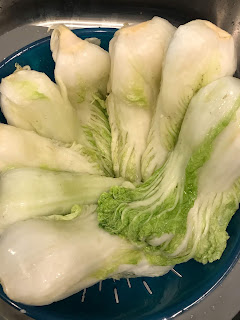
Next, marinate the radish with 1 tbsp fish sauce and 1 tbsp sugar and set aside.

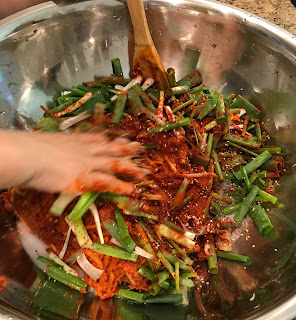
Over the stovetop, heat 1 1/2 cups of water over medium heat. Once the water starts to form small bubbles, add 5 tbsp the rice flour slowly, mixing it into the water until it’s thick like pudding.
Add 1 tbsp fish sauce and 1 tbsp salted shrimp ( optional)
Let it cool completely.
In a high-powered blender, blend the onions, ginger, half an apple or Asian pear, 1 tbsp fish sauce and a 1/2 cup water until it becomes sauce.
Add the following to the bowl of daikon, mixing ingredients with your hands and let it marinate for 30 min:
The cooled down rice flour/water paste
 |
| Rice flour in water, cooked until thick |
In a high-powered blender, blend the onions, ginger, half an apple or Asian pear, 1 tbsp fish sauce and a 1/2 cup water until it becomes sauce.
Now, you are ready to get your hands dirty to prepare the kimchi! You can also opt to use food gloves found on Amazon or your local Asian supermarket.
NOTE: If you use your hands, please remove your contact lens first! 😖Add the following to the bowl of daikon, mixing ingredients with your hands and let it marinate for 30 min:
1 cup Korean red chili flakes (gochugaru)
1/2 cup minced garlic
4 bunches of green onions, cut in 1- inch length
1/2 cup roasted sesame seed
4 tbsp fish sauce
The onion /apple mixture from the blenderThe cooled down rice flour/water paste
Taste and add more chili flakes to bring it to the spice level you desire, about 3-5 more tbsps


One at a time, cover each leaf generously with the marinade. Using the large leaf on the back, wrap the napa in a tight bundle and place in a large container for fermenting and storing.
I use a kimchi container for probiotic fermentation and it also keeps the strong kimchi scent locked in the container. See photo below.
After 2 days or so, the kimchi is ready to eat. It can be stored for 3 months in an airtight container.
I love using aged kimchi for Kimchi Fried Rice or Spicy Tofu Kimchi Stew

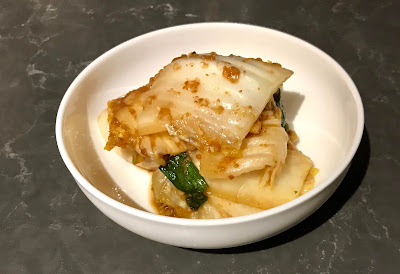







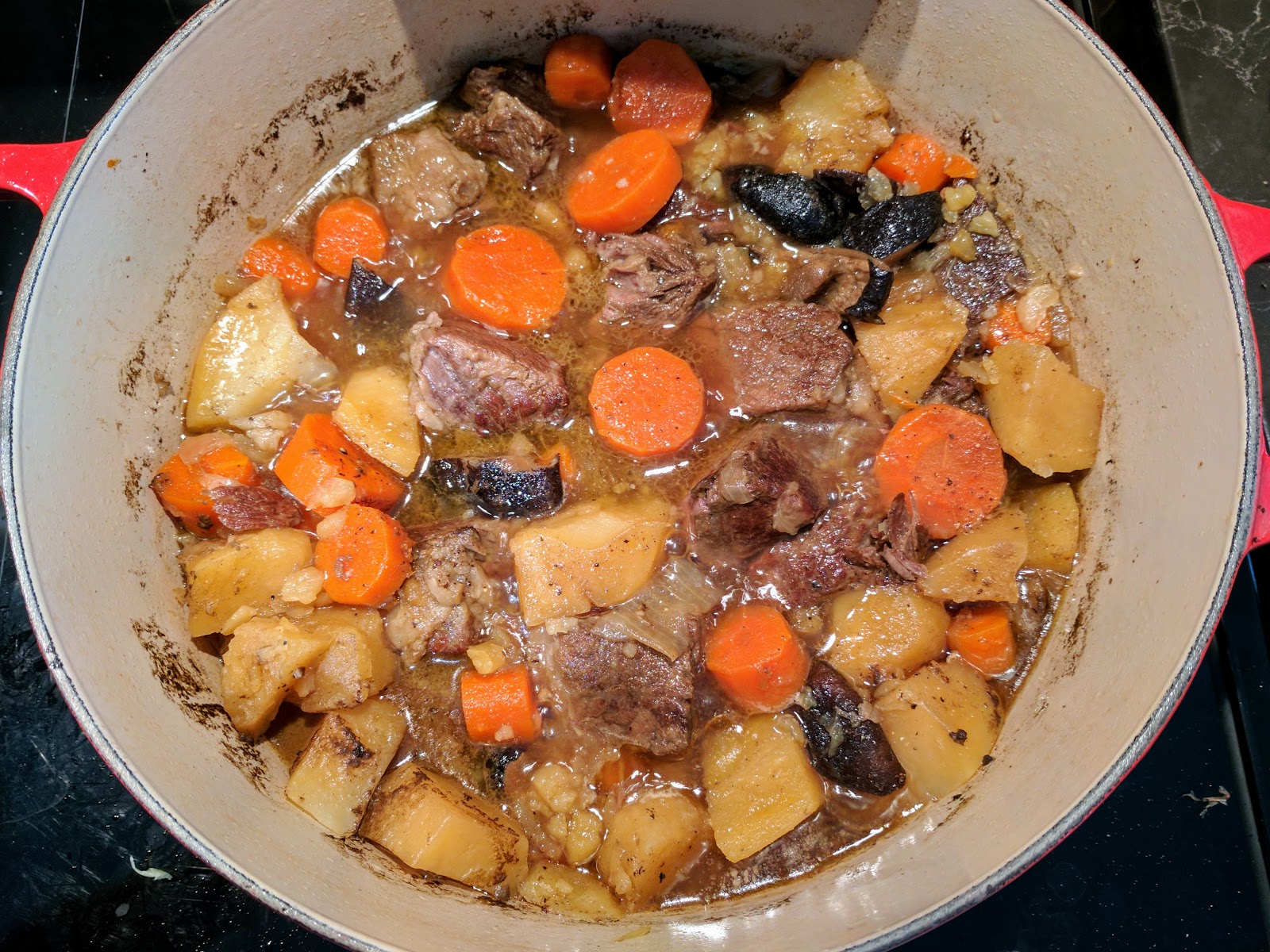
Comments
Post a Comment